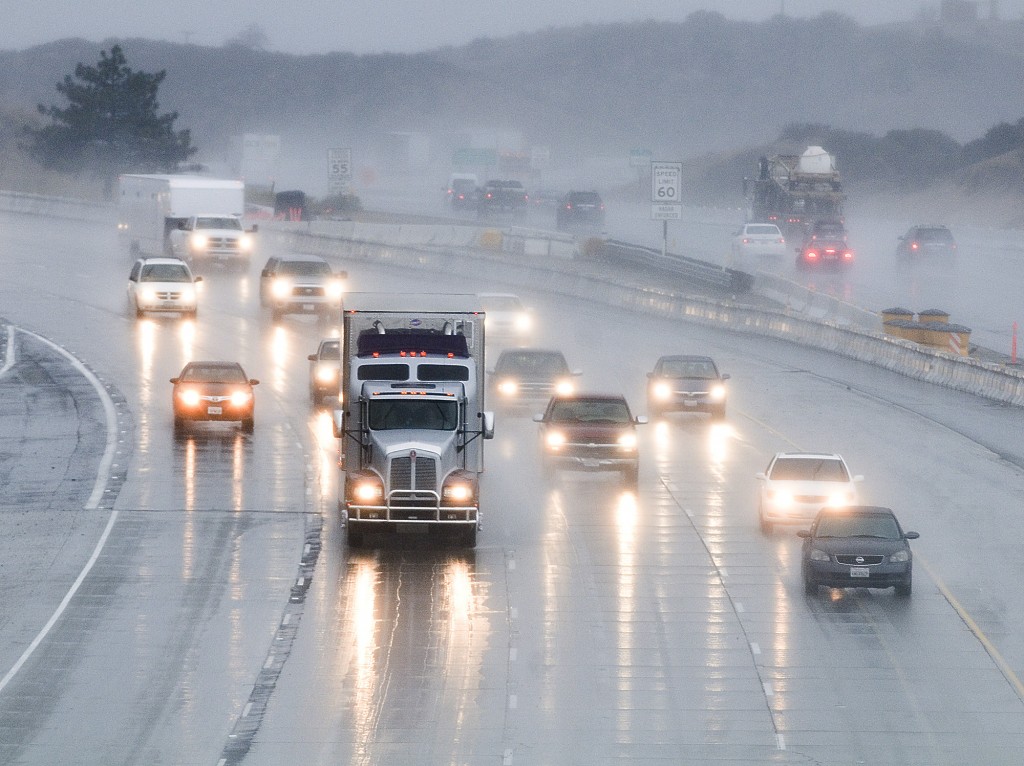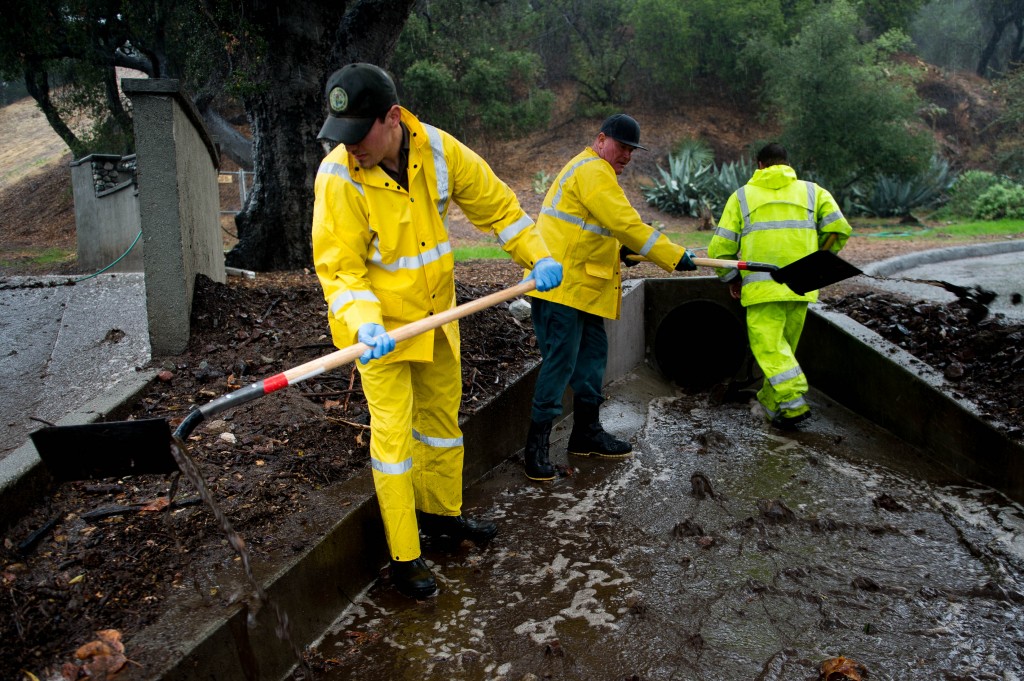- California Assembly OKs highest minimum wage in nation
- S. Korea unveils first graphic cigarette warnings
- US joins with South Korea, Japan in bid to deter North Korea
- LPGA golfer Chun In-gee finally back in action
- S. Korea won’t be top seed in final World Cup qualification round
- US men’s soccer misses 2nd straight Olympics
- US back on track in qualifying with 4-0 win over Guatemala
- High-intensity workout injuries spawn cottage industry
- CDC expands range of Zika mosquitoes into parts of Northeast
- Who knew? ‘The Walking Dead’ is helping families connect
Much-needed California rain brings problems

Northbound traffic travels on Interstate 15 near the top of the Cajon Pass near Oak Hills, Calif. on Tuesday, Dec. 2, 2014. Rain saturated the pass and the High Desert but did not cause flooding damage. (AP Photo/Daily Press, James Quigg)

Municipal work crews clear debris and mudflows in the storm drain below the Colby Fire burn area in 1000 block of N Lorain Avenue in Glendora, Calif. on Tuesday, Dec. 2, 2014. Heavy rain from a powerful Pacific storm swept through California on Tuesday, providing some relief from a three-year drought. (AP Photo/San Gabriel Valley Tribune, Watchara Phomicinda)
LOS ANGELES (AP) — A second day of much-needed rain fell across drought-stricken California on Tuesday, but the Pacific storm also brought fresh concerns about possible flooding and mudslides in sodden foothill communities scarred by wildfires.
Forecasters predicted scattered showers Wednesday for Southern California, where the heaviest torrents fell a day earlier. Inland areas east of Los Angeles were expected to see the strongest downpours.
The National Weather Service said up to 6 inches of rain was possible in some areas by the time the storm ends Thursday. But it would take many more similar storms for the state to pull out of three years of drought.
Flash flood watches were extended for wildfire burn areas, where the soaking brought worries of debris flows and flooding that did not immediately materialize. But the saturation from previous rains and the next round of showers could change that quickly.
In Camarillo Springs, about 50 miles northwest of Los Angeles, gushing water and muddy debris began pouring from hillsides Tuesday, forcing the mandatory evacuation of about 75 homes for much of the day. The order was lifted around 6 p.m., but authorities urged people to stay away voluntarily.
A handful of residents huddled at a nearby church as they waited to learn the fate of their homes and bemoaned a string of bad luck that began with a wildfire that burned the area more than a year ago.
“It’ll be the locusts next,” evacuee Rose Martin told the Ventura County Star. “It’s that mountain. You never know what it’s going to do.”
In Orange County, roughly 100 miles to the southeast, about 60 homes in rural Silverado Canyon were under a voluntary evacuation notice. The area burned over the summer and has been the site of previous mudslides, including one that killed a girl in 2005 and another in 1969 that killed six people who sought shelter in the fire station.
Residents worked together to evacuate large animals, and those who chose not to leave gathered in the tiny town’s lone cafe to wait out the rain and keep warm.
“We have to take this seriously because we don’t know what’s going to happen,” longtime resident Connie Nelson said. “We’ll just deal with it as it comes. We take care of people up here.”
In Tuesday’s downpours, downtown Los Angeles received 1.15 inches of rain, breaking a 1961 record for the day, according to the weather service. More than 2 inches fell on Santa Barbara. Totals of around an inch also set daily records in Oxnard and at airports in Los Angeles, Camarillo, Long Beach, Lancaster and Palmdale.
In Northern California, nearly 1 ½ inches fell on San Francisco, where historic cable cars and their 100-year-old braking systems had to be shut down. Stockton and San Jose also saw more than an inch.
Traffic was snarled and flights were delayed in cities around the state.
California’s drought has left the Sierra Nevada snowpack — which counts for most of the state’s water supply — at just 24 percent of normal for this time of year. Los Angeles, like many communities, has had less than half of the usual rain in 2014.
Gov. Jerry Brown declared a drought emergency in January and called on residents to reduce consumption by 20 percent. As the storm blew in, new state data was released showing Californians aren’t meeting his goal: Statewide water usage was down just 6.7 percent in October.
Meantime, another potential problem awaited Southern California coastal residents: A thick tangle of garbage that gets washed from city streets into storm drains and then onto beaches after major storms.
















